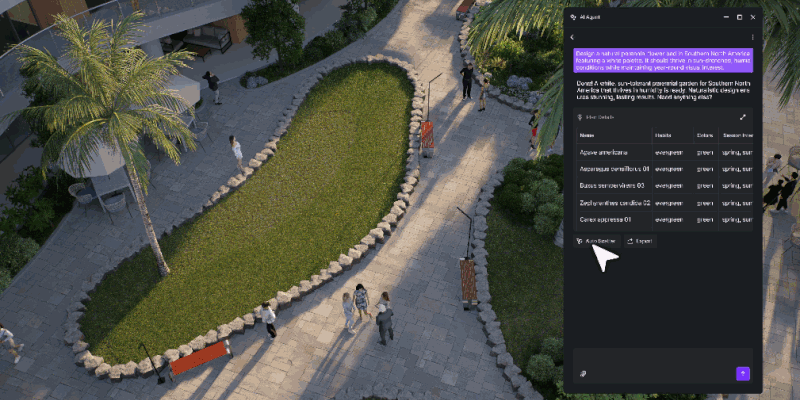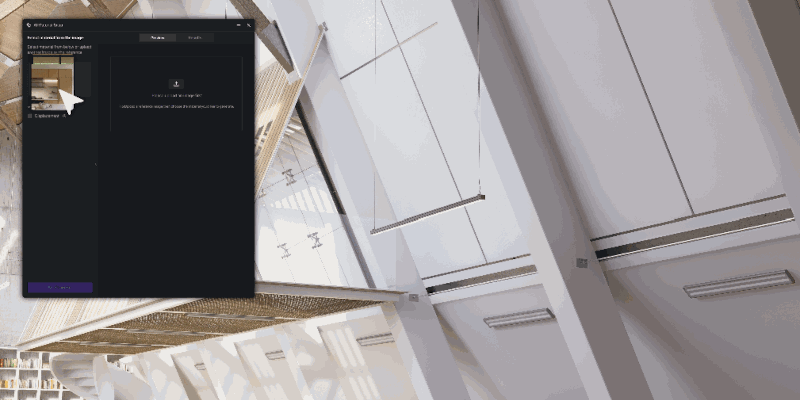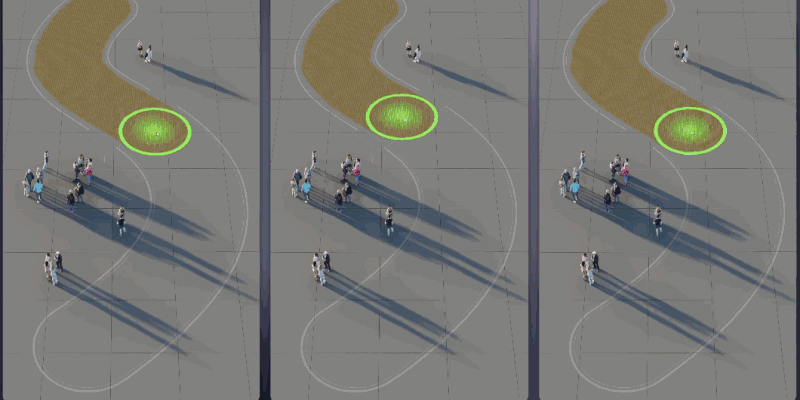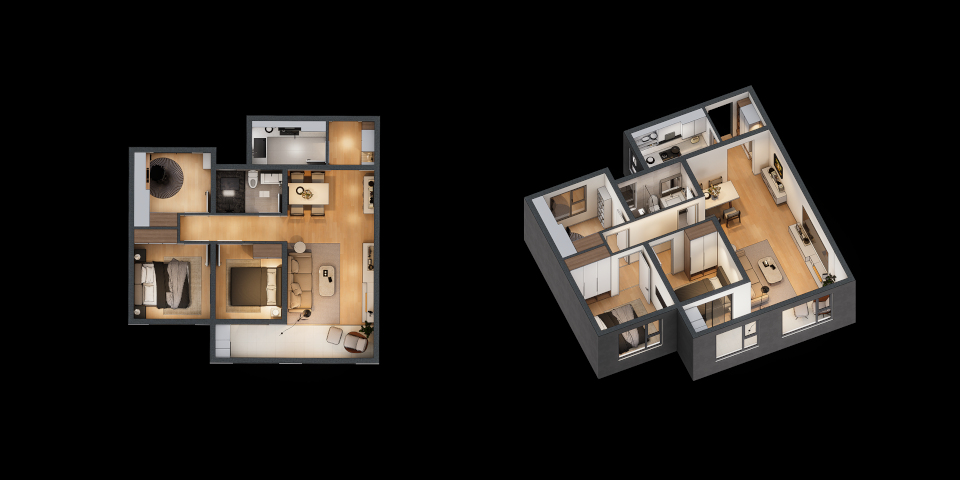Dimension 5 releases D5 Render 2.11
Dimension 5 has released D5 Render 2.11, the new version of its real-time visualization tool and GPU renderer for DCC and CAD software including 3ds Max, Blender and Cinema 4D.
It’s a wide-ranging update, adding a range of new AI features, including a multi-purpose AI Agent, and the option to generate sets of PBR textures automatically from reference images.
However, there are also new scene layout tools, new camera and lighting features, FSR frame generation to boost frame rates on AMD GPUs, and support for more file import formats.
A rapidly evolving GPU ray tracing renderer for architectural visualisation
First released in 2021, D5 Render is an increasingly powerful architectural renderer with linking plugins for a range of DCC and CAD applications.
As well as rendering scenes directly from a linked DCC app, users can import models in FBX, Alembic or SKP format, apply PBR materials, and assign HDRIs, lights and LUTs.
Other features include object scattering and shot dressing tools, support for volumetric and particle-based effects, and path-based animation tools for crowds or vehicles.
The software supports DXR-based hardware-accelerated ray tracing on NVIDIA, AMD and Intel GPUs, and is capable of rendering 16K still images, and 4K videos.

D5 Render 2.11: new multi-purpose AI Agent
D5 Render 2.11, like many of Dimension 5’s recent releases, adds new AI tools to the software.
Whereas previous AI features have focused on specific tasks, the new AI Agent is a more general-purpose agentic AI ‘assistant’.
It currently has two, fairly disparate functions: to answer technical support questions about the software, and to generate planting schemes for exterior visualizations.
The D5 Bot is a fairly conventional AI bot, which answers natural-language questions about D5 Render’s tools, and how to use them to tackle particular tasks.
In contrast, Smart Planting (above) uses a plant database and climate model to generate planting schemes for 3D scenes, based on the real-world location of the site.

Other AI features: generate PBR materials from real-world reference images
More conventional new AI tools include AI Material Snap, which automatically generates PBR materials matching a real-world reference image: either the entire image, or a specific area of it.
The feature can also recommend similar PBR materials from D5 Render’s asset library.
The Atmosphere Match and Post – AI features added in previous releases have been updated.

Scene layout: new Advanced Brush and Custom Path help dress exterior scenes
Outside the AI tools, D5 Render 2.11 also adds new options for laying out 3D scenes.
They include the new Advanced Brush (above), which enables users to paint or erase vegetation into a scene, using procedural rules to scatter the 3D plants within the painted regions.
A new Custom Path option makes it possible to draw paths in the scene and have D5 Render distribute objects from the asset library – for example, cars or street furniture – along them.

Lights and cameras: parallel projection, disc lights, and better IES light support
New camera options in D5 Render 2.11 include support for parallel projection (above), to eliminate perspective distortion when rendering plan, elevation and section views of buildings.
There are also new options to align the camera view to any 3D surface in a scene, or to keep the camera focused on a specific point in the scene during camera moves.
Updates to lighting include a new Disc Light type, which creates soft, diffuse lighting effects; and new directionality controls for the existing Rect and Strip lights.
In addition, Point and Area lights now support IES profiles, meaning that real-world IES lighting data can now be used across “all major light types”.
Rendering: real-time path tracing and FSR frame generation
In addition, the real-time path tracing system (RTPT) introduced in D5 Render 2.10 is now out of alpha, and is now used as the default GI system within the software.
Using the default settings, its performance is “roughly on par” with the previous GI solution, but it generates more accurate results, particularly with diffuse indirect lighting.
However, the legacy GI solution is still available – not least because RTPT is not supported on AMD GPUs.
Better news for AMD users is that D5 Render now supports the frame generation features of FSR, AMD’s render upscaling technology, which is integrated into the software.
The change should improve frame rates when navigating scenes, in the same way as DLSS frame generation, which is already supported for users of current NVIDIA GPUs.
Pipeline integration: new 3D import formats and better Alembic import
Other changes include support for a wider range of 3D formats when importing files directly in the software, including 3DS, DAE (Collada), DXF, glTF/GLB, OBJ, and STL.
Import of Alembic (ABC) files is also now faster and more stable.
Teams subscriptions only: Cesium integration and 8K video rendering
Studios with Teams subscriptions get a range of additional features, including the integration of Cesium, the open-source library for creating 3D globes and maps in web browsers.
Teams users also get access to XR Tour, an “end-to-end Gaussian Splatting service”, in addition to the existing 3DGS capabilities built into D5 Render itself.
In addition, video output – previously capped at 4K – can now be rendered at 6K or 8K resolution.
Pricing and system requirements
D5 Render is available for Windows 10+. It requires a compatible GPU: Dimension 5 recommends a NVIDIA GeForce GTX 1060+, AMD Radeon RX 6400 XT+ or Intel Arc A3+.
Integration plugins are available for 3ds Max 2014-2016 and 2018+, ArchiCAD 21+, Blender 2.93-4.2, Cinema 4D R20+, Revit 2018.3+, Rhino 6.1+, SketchUp 2017+ and Vectorworks 2024+.
The Community edition is free; the Pro edition, which includes AI features, frame sequence rendering, and access to the full asset library, costs $38/month or $360/year.
Teams subscriptions, which add further features including simultaneous editing and support for 3D Gaussian Splatting, cost $75/month or $708/year.
Read a full list of new features in D5 Render 2.11 in the online release notes
Have your say on this story by following CG Channel on Facebook, Instagram and X (formerly Twitter). As well as being able to comment on stories, followers of our social media accounts can see videos we don’t post on the site itself, including making-ofs for the latest VFX movies, animations, games cinematics and motion graphics projects.
